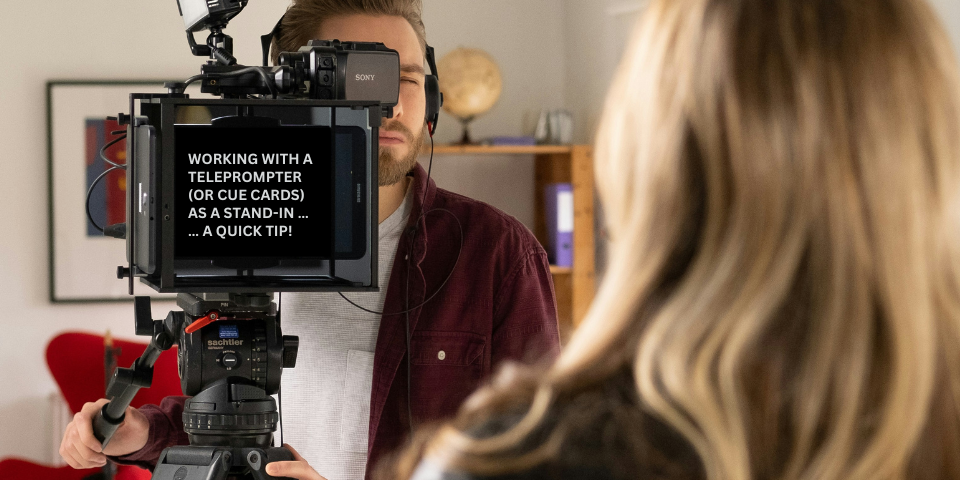If you are standing on a TV or film with driving shots, there is a decent chance that some of those scenes will require shots of the actors in the cars and coverage of their dialogue.
While cameras can be rigged to cars and actors can be shot driving such rigged cars, the process can be risky and dangerous because the actors have to concentrate on driving while nailing their lines. They also have to be responsible for camera equipment which may partially obstruct their view or — when side-mounted with a camera — change the width of the car.
If you’re ever been asked to stand in in a car, you may find you’re told it’s on a process trailer. Or, you might be see on the callsheet that the scene will be shot using “poor man’s process.”
What’s a process trailer and what’s a poor man’s process? What do these mean to stand-ins? Let’s dive in!
What a Process Trailer Is
“Process trailers” are often used to shoot actor dialogue within cars.
A process trailer is a wheeled platform low to the ground onto which a vehicle is secured. This platform is towed by another vehicle that usually contains minimal crew members and possibly camera equipment to film the actors in the car. If camera equipment is not on the towing vehicle, then the camera equipment is secured to the front or sides of the towed vehicle, which is known as a “picture car.”
By towing the process trailer, the picture car appears to be driving while simply being towed. Being low to the ground aids the effect of driving. The process trailer allows the actors to focus more on their dialogue and removes the responsibility of actually operating the car during their scenes.
Process Trailer Safety
Safety is of huge importance when it comes to process trailers. Many drivers of the towing vehicle will hold safety meetings before a shot, offering instructions on what to do and what not to do around the process trailer.
For example, the driver of the towing vehicle may explain that if s/he blows the horn in a particular pattern, no one is to approach the vehicle or get on or off. The driver may also explain a different pattern of blowing the horn to notify when it is safe to approach the vehicle again.
It is not uncommon for process trailers to be led in traffic by a police vehicle given how dangerous they can be. Riders on the towing vehicle while it is in motion need to secure themselves to the process trailer via restraints or seatbelts to ensure they are not discharged from the vehicle should it encounter a bump or get involved in an accident.
While stand-ins are not usually on board of moving process trailers, make yourself present at safety meetings, and keep in mind the safety information and follow it.
Tips When Standing in on a Process Trailer during Camera Setup
If you find yourself standing in in a car on a process trailer, it may seem like an easy job of “just sitting in a car.” However, you may need to pay especial attention because standing in in a process trailer car is different than simply sitting in a parked car.
First and foremost, as you get in and out of a car on a process trailer, be careful with opening and closing the doors. The doors may be boxed in a bit by the process trailer’s low guardrail or wheel wells, so if you open them fully, you could chip the picture car’s paint or dent its door.
Also, there may be camera equipment rigged to a door. Opening a door could mean the camera has to swing out. Make sure to open car doors slowly if there is camera equipment on it.
In fact, if camera equipment is rigged to your door, you may find that you need to exit or enter the picture car from the opposite door! Doing so may require some acrobatics as you position yourself into the right seat.
Ben’s Tip!
On process trailer days, keep two things in mind:
- Wear non-restrictive clothes so you can easily move in tight areas.
- As equipment is loaded onto the process trailer, calculate and recalculate the quickest way to get into and out of your position, especially if your car door is obstructed.
Also, when you are standing in inside a picture car, be prepared for the following to happen:
- You may need to adjust the position of your seat. Familiarize yourself with the location of the seat controls, which may be on the car door, on the side of your seat, or below the front of your seat.
- You may need to open or close the windows of the car. Familiarize yourself with the location of the window controls.
- Controlling either of the above may involve turning on the car. It is a good idea not to turn on the car without permission from someone in the props department — they are responsible for the car. If you are approved to turn on the car, locate the keys or on button for the car should you need to turn it on.
- You may need to adjust the position of the rear view mirror. You may need to pitch it, rotate it, or even fold the entire piece up or down. Be aware of any instructions on the position of the mirror.
- Someone from the sound department may need to sit in your seat in order to rig microphones, or someone from the electrics department may need to sit in your seat to rig lights. Avoid getting too comfortable when you are sitting in because others will likely need you to move out for them to do work. Once they leave, look for an appropriate opportunity to sit back in.
- You may need to set an eyeline when you are sitting in. Be aware of instructions from the crew to look in precise places so that they can set the eyeline for the actors.
What a Poor Man’s Process Is
The term “poor man’s process” refers to the simulation of driving without the use of a process trailer. In other words, “poor man’s process” refers to the film technique of using a stationary car (often on a soundstage) and manually nudging the car and rotating lights to simulate the effect of movement and driving.
Given that rentals of process trailers can be expensive, “poor man’s process” implies simulating driving “on the cheap.” Picture cars can be rigged in such a way that grips can slightly nudge or bounce the car during shooting to make it appear to rumble along. Lights can be turned during shooting to make it appear the car is driving by street lamps. Smoke can also be added at the back along with fans to blow it to simulate exhaust.
This video gives great insight into what a poor man’s process looks like:
Tips When Standing in during Camera Setup for Poor Man’s Process Shots
Standing in on poor man’s process shots is much the same as standing in on a process trailer minus the obvious danger. You may need to find alternate entry points to the car other than your door, you may need to get in and out to allow crew to rig the car with microphones or lighting, and you may need to make adjustments to the seat or windows. Green screens are often present when shooting poor man’s process shots, so avoid wearing green tones on such days.
Also, should the camera be operated behind you — for example, if the camera operator is in the back seat — tune in to any instructions the camera operator may give you. Given the tight space, excessive talk can make it hard for the camera operator to give instructions or hear replies, and holding a heavy camera in a tight space can make it stressful for the operator. Try to avoid unnecessary talking to keep stress from boiling over.
Also given the tight space, if the camera is behind you, try to maintain your position. Even the smallest movements can effect the framing of the shot and the position of the camera operator.
Summary
When standing in on days shooting with process trailers or poor man’s process, expect to find yourself sitting in cars a lot. You might find you have a little less to do on process trailer days because once the process trailer leaves, you may not have any monitors to watch the actors. On days shooting poor man’s process, you probably will have a little more to look at.
Overall, be careful getting in and out of the picture cars, wear clothing that will allow you to move into tight spaces, and keep up your awareness — you’re not “just sitting there”!
What else have you encountered with respect to process trailers and poor man’s process when standing in? Share any additional comments below!






Leave A Comment